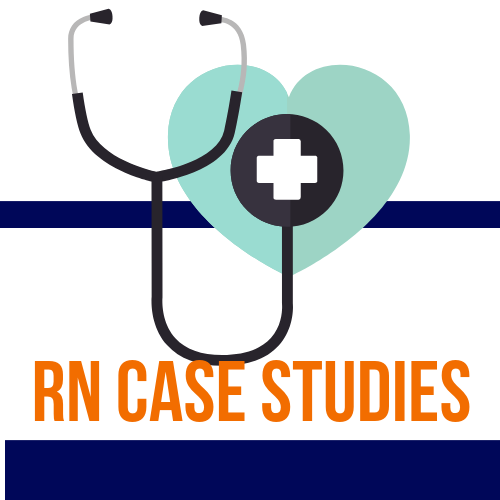“He who must not be named!”
Many healthcare providers and leaders tremble in fear at the mention of The Joint Commission (TJC). For a long time, I think my facility focused more on avoiding a bad TJC survey, rather than pursuing an excellent survey. I remember learning about TJC in nursing school (back then it was call JACHO). While I didn’t fully grasp the significance or purpose of The Joint Commission I did understand this; the Joint Commission was bad. How unfortunate for an organization whose vision is to ensure “All people always experience the safest, highest quality, best-value health-care across all settings,” to be portrayed as adversarial. Revisiting the original mission and vision can provide a positive perspective and renewed sense of purpose when working to educate student nurses about the value and relevance of the quality and safety goals.

What are National Patient Safety Goals and Why does it matter?
“The purpose of the National Patient Safety Goals (NPSG) is to improve patient safety. The goals focus on problems in health care safety and how to solve them” (The Joint Commission).
To see a list of the 2019 National Patient Safety Goals Click HERE!
Let’s Talk About the History of the Joint Commission
The concept of hospital standardization was formally discussed and called for by the American College of Surgeons between 1910 and 1918, at which point the first Minimum Standard for Hospitals document was issued.1 The first standards document called for professional physicians to be licensed and competent in their respective fields, the establishment of policies and guidelines, regular staff meetings, periodic review of clinical competence, complete case records for each patient encounter and the availability of diagnostic and therapeutic support services.2 Hospital participation in site-visits and the support of other professional organizations grew as the standards were improved and expanded through the early 1950’s, culminating in the establishment of the Joint Commission on Accreditation of Hospitals in 1953. By the mid-1960’s hospitals successfully achieving accreditation became eligible for participation in Medicare and Medicaid programs tying reimbursement to standards compliance. Since that time, standards have become more comprehensive and now apply to long-term care, psychiatric services, ambulatory health and managed care, laboratory services, alcohol and substance abuse programs, community mental health, home and hospice, and ambulatory surgery centers. By 2000, patient safety had become the top priority both nationally and internationally.
The first set of National Patient Safety Goals (NPSG’s) became effective in 2003 and included input from healthcare providers, organizations, consumers and other stakeholders. Key components were revised for 2019 to include improved accuracy in patient identification, improved effectiveness in staff communication, improved medication safety, reduction in harm associated with clinical alarm systems, reduction of healthcare associated infections, identification of safety risks specific to each hospitals patient population, and prevention of wrong site, procedure and person during surgery.3
The list of healthcare organizations participating in accreditation have continued to grow including office-based surgery practices, critical access hospitals and Disease-Specific Care programs. The patient centered standards related to error reduction, staffing, mechanical devices, preventable injuries, infections, communication, integrated care and perinatal services were key initiatives during the first fifteen years of the twenty-first century. Most recently, targeted tools, assessments, and advanced certification programs, quality and outcome measures, education of healthcare professionals and community members, inter-disciplinary emergency management and electronic records have been added to the scope and breadth of the Joint Commission Standards. 4
Patients and their families have risen from bystanders to this standard setting to becoming the primary focus of the most recent initiatives under the National Patient Safety Goals, Suicide Prevention and Anti-coagulant Therapy.
What about nursing students?
Where do students fit in this picture? In truth, as a nurse educator and leader, I find it challenging to keep up with the Joint Commission standards. At times it seems overwhelming and even burdensome. Just as hospital leaders have learned it is better to prepare healthcare staff to be approachable and proactive with surveyors; we must also empower our students. If you are fortunate enough to be at a hospital during a Joint Commission survey, do you instruct your students to run and hide or do you empower them? Is it more constructive to teach students what the surveyors are looking for and how to interact with them? Surveyors visits hundreds of hospitals each. They are an invaluable resource!
Conclusion
What started out as a simple standardization of services within the hospital setting has grown to include multiple healthcare organizations and disease-specific programs and have expanded the focus to patient centered services and safety. Resource materials, tool-kits, program guidance and inter-disciplinary collaborations have become the tools to achieve grassroots changes in service delivery. Nurses, other healthcare providers and patients have benefited from the continuing diligence of advocates and leaders focused on safety and accountability within an ever changing and increasingly more complicated medical system.
References:
1https://www.jointcommission.org/about_us/history.aspx
2https://www.archivesofpathology.org/doi/full/10.5858/arpa.2016-0348-HP
3https://www.jointcommission.org/assets/1/6/NPSG_Chapter_HAP_Jan2019.pdf
4https://jntcm.ae-admin.com/assets/1/6/TJC_history_timeline_through_2018.pdf





